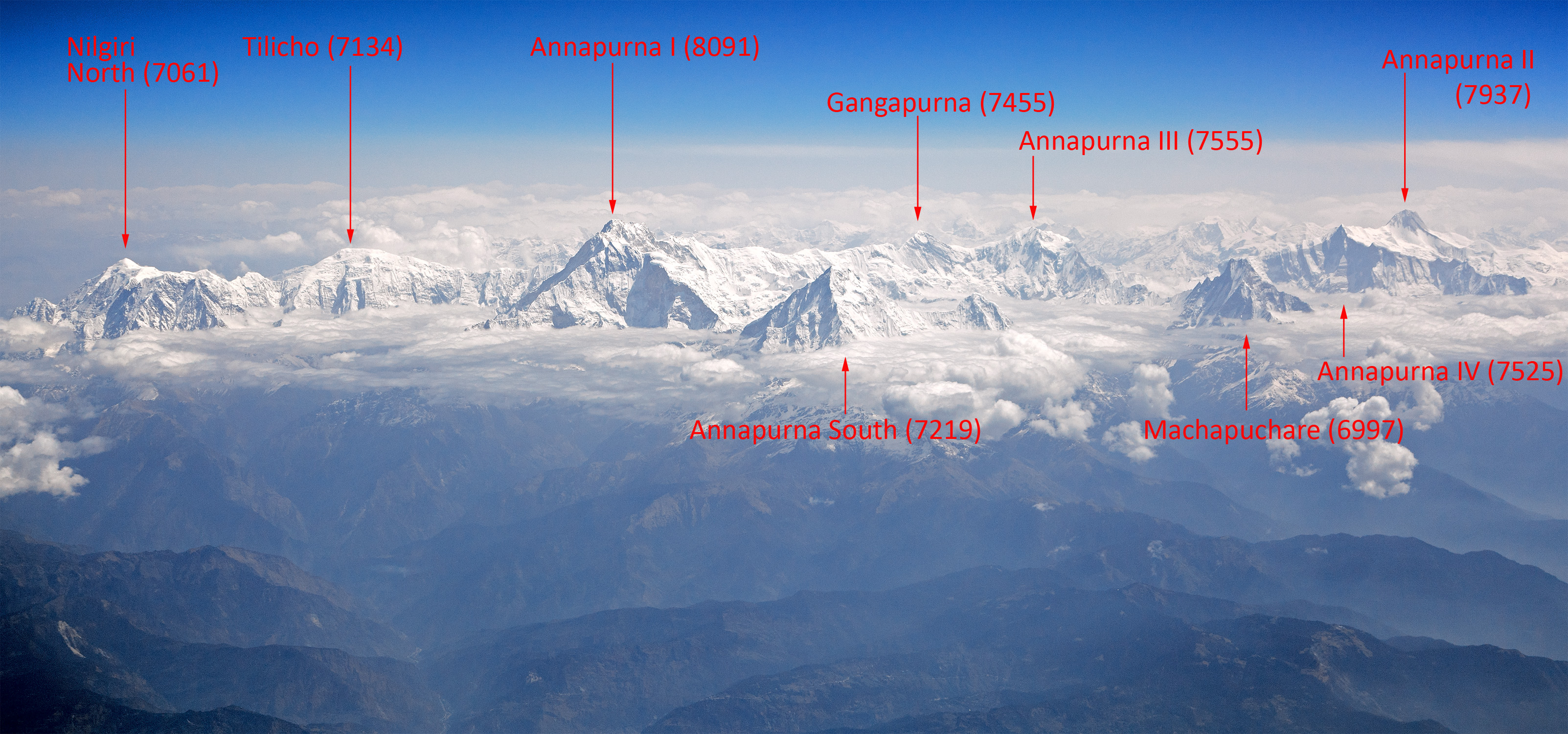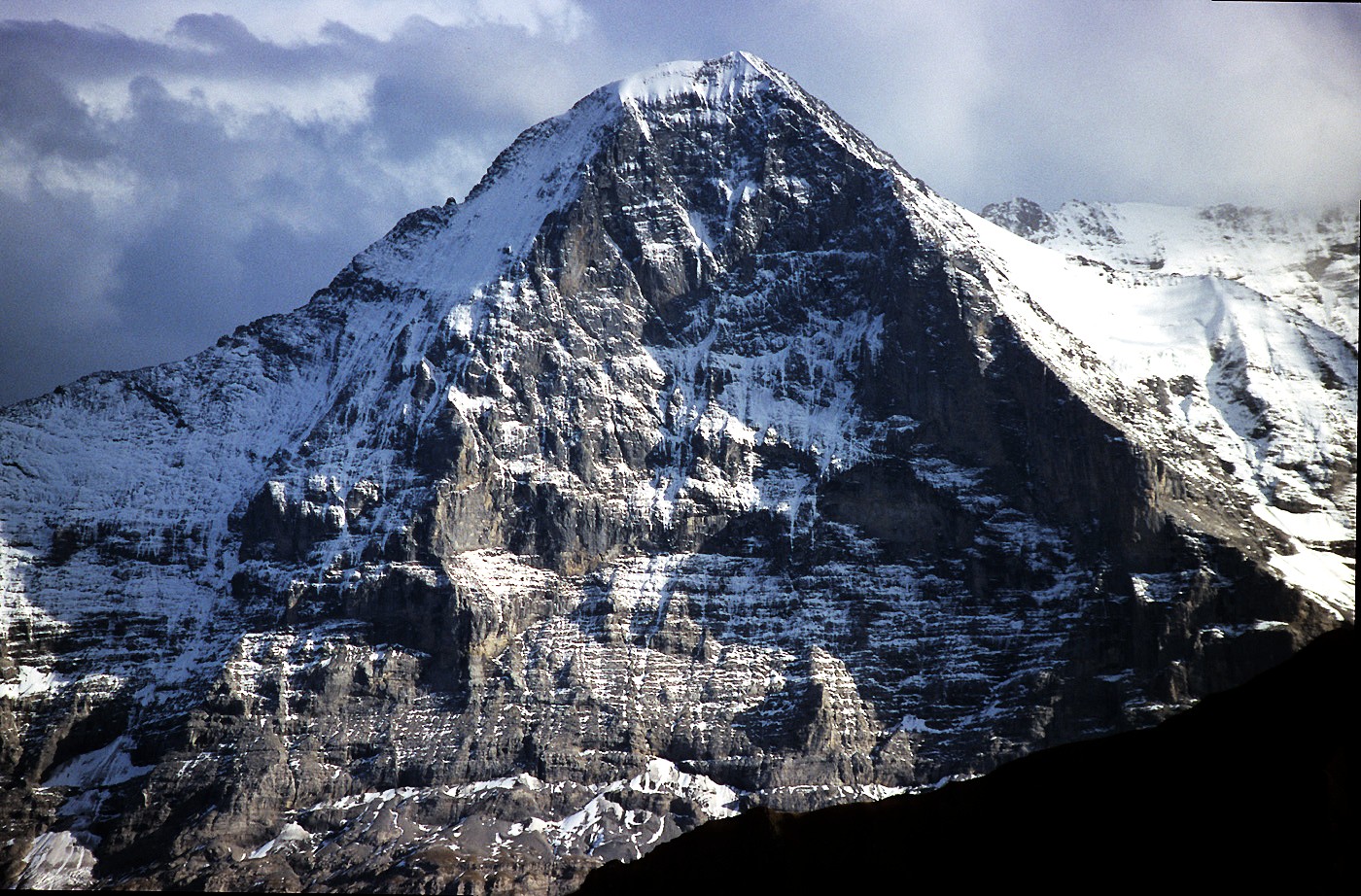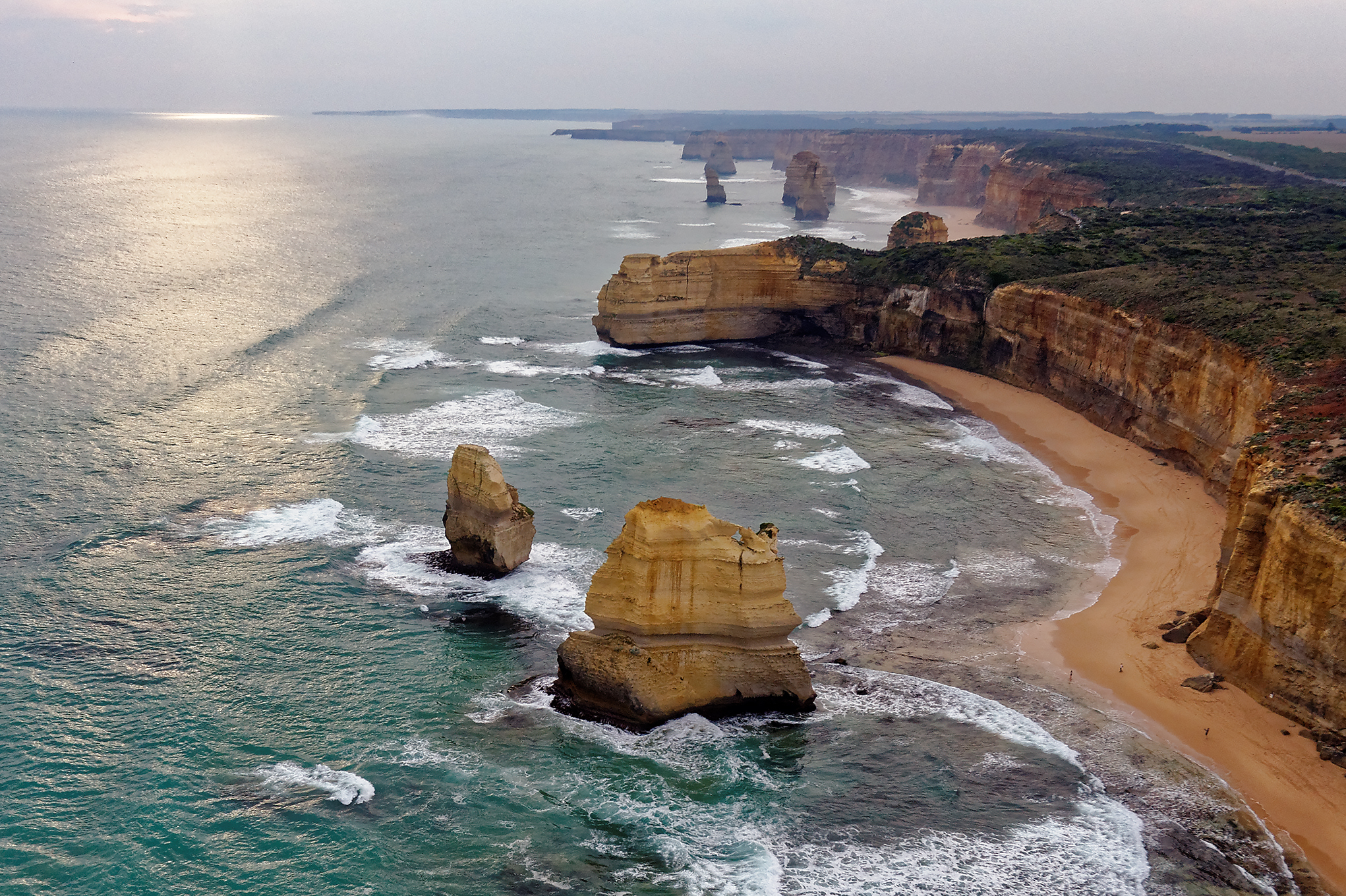|
Ian Clough (mountaineer)
Ian Clough (1937–1970) was a British mountaineer who was killed on the 1970 British Annapurna expedition led by Sir Chris Bonington to climb the south face of the Himalayan massif. He was later described by Bonington as "the most modest man I ever had the good luck to climb with" and "the kindest and most selfless partner I ever had." Climbing career Clough was born on 13 March 1937La Montagne et Alpinisme, Revue Du Club Alpin Francais et du Groupe de Haute Montagne, Paris, France, February 1971, No. 81, p. 41, https://gallica.bnf.fr/ark:/12148/bpt6k9763610j?rk=21459;2 in the Yorkshire town of Baildon, near Bradford, and learned to climb on the gritstone edges near his home. He did his National Service in the RAF, and he joined the RAF Kinloss Mountain Rescue Service. He supported himself after leaving National Service in various jobs, including running a small climbing school from the cottage he and his wife Nikki Clough owned at Glen Coe. Now one of the best British cl ... [...More Info...] [...Related Items...] OR: [Wikipedia] [Google] [Baidu] |
Annapurna
Annapurna (; ) is a mountain situated in the Annapurna mountain range of Gandaki Province, north-central Nepal. It is the 10th highest mountain in the world at above sea level and is well known for the difficulty and danger involved in its ascent. Maurice Herzog led a French expedition to its summit through the north face in 1950, making it the first eight-thousander to be successfully climbed. The entire massif and surrounding area are protected within the Annapurna Conservation Area, the first and largest conservation area in Nepal. The Annapurna Conservation Area is home to several world-class treks, including Annapurna Sanctuary and Annapurna Circuit. For decades, Annapurna I held the highest fatality-to-summit rate of all principal eight-thousander summits; it has, however, seen great climbing successes in recent years, with the fatality rate falling from 32% to under 20% from 2012 to 2022. This figure places it just under the most recent fatality rate estimates fo ... [...More Info...] [...Related Items...] OR: [Wikipedia] [Google] [Baidu] |
Don Whillans
Donald Desbrow Whillans (18May 19334August 1985) was an English rock climber and mountaineer. He climbed with Joe Brown and Chris Bonington on many new routes, and was considered the technical equal of both. Early life Born and brought up in a two-up two-down house in Salford, Lancashire, Whillans began hiking on the Pennine moors while still at Broughton modern school; climbing was the next step for an adventurous young boy. Climbing career Whillans was an apprentice plumber when he started his climbing career with Joe Brown in 1951. Whillans met Brown while climbing at the Roaches in Staffordshire. When Brown's climbing partner failed to follow him up a new route, Whillans asked if he could try—and subsequently led the second pitch of Brown's new route, which became known as "Matinee". From rock climbing he expanded into mountaineering with trips to the Alps where ascents included the " Bonatti Pillar" of the Dru and the first ascent with Chris Bonington, Jan Długos ... [...More Info...] [...Related Items...] OR: [Wikipedia] [Google] [Baidu] |
Arts
The arts or creative arts are a vast range of human practices involving creativity, creative expression, storytelling, and cultural participation. The arts encompass diverse and plural modes of thought, deeds, and existence in an extensive range of List of art media, media. Both a dynamic and characteristically constant feature of human life, the arts have developed into increasingly stylized and intricate forms. This is achieved through sustained and deliberate study, training, or theorizing within a particular tradition, generations, and even between civilizations. The arts are a medium through which humans cultivate distinct social, cultural, and individual identities while transmitting values, impressions, judgments, ideas, visions, spiritual meanings, patterns of life, and experiences across time and space. The arts are divided into three main branches. Examples of visual arts include architecture, ceramic art, drawing, filmmaking, painting, photography, and sculpture. ... [...More Info...] [...Related Items...] OR: [Wikipedia] [Google] [Baidu] |
Sérac
A serac () (from Swiss French ''sérac'') is a block or column of glacial ice, often formed by intersecting crevasses on a glacier. Commonly house-sized or larger, they are dangerous to mountaineers, since they may topple with little warning. Even when stabilized by persistent cold weather, they can be an impediment to glacier travel. Seracs are found within an icefall, often in large numbers, or on ice faces on the lower edge of a hanging glacier. Notable examples of the overhanging glacier edge type are well-known obstacles on some of the world's highest mountains, including K2 at "Bottleneck (K2), The Bottleneck" and Kanchenjunga on the border of India and Nepal. Significant seracs in the Alps are found on the northeast face of Piz Roseg, the north face of the Dent d'Hérens, and the north face of Lyskamm. Incidents * On a 1969–1970 Japanese expedition to Mount Everest, Kyak Tsering was killed by a falling serac. * In 1990, an Lenin Peak disaster, earthquake caused a bloc ... [...More Info...] [...Related Items...] OR: [Wikipedia] [Google] [Baidu] |
Dougal Haston
Duncan "''Dougal"'' Curdy MacSporran Haston (19 April 1940 – 17 January 1977) was a Scottish mountaineer noted for his exploits in the British Isles, Alps, and the Himalayas. From 1967 he was the director of the International School of Mountaineering at Leysin, Switzerland, a role he held until his death in an avalanche while skiing above Leysin. Biography Haston was born in Currie, on the outskirts of Edinburgh, and educated at West Calder High School. Early in his career, he climbed numerous new Scottish routes with Robin Smith. Routes such as The Bat on the Carn Dearg Buttress of Ben Nevis helped establish the pair as future stars. Smith died in an accident in 1962. In 1965, shortly before his ascent of Harlin Direct on the Eiger, Haston was sentenced to 60 days in prison having run down and killed 18-year-old student James Orr whilst driving drunk. Haston lived on to realize his early promise. In 1970, he and Don Whillans were the first to climb the south face of An ... [...More Info...] [...Related Items...] OR: [Wikipedia] [Google] [Baidu] |
Matterhorn
The , ; ; ; or ; ; . is a mountain of the Alps, straddling the Main chain of the Alps, main watershed and border between Italy and Switzerland. It is a large, near-symmetric pyramidal peak in the extended Monte Rosa area of the Pennine Alps, whose summit is above sea level, making it List of Alpine four-thousanders, one of the highest summits in the Alps and Europe.Considering summits with at least 300 metres prominence, it is the 6th highest in the Alps and Europe outside the Caucasus Mountains. The four steep faces, rising above the surrounding glaciers, face the four compass points and are split by the ''Hörnli'', ''Furggen'', ''Leone''/''Lion'', and ''Zmutt'' ridges. The mountain overlooks the Swiss town of Zermatt, in the canton of Valais, to the northeast; and the Italian town of Breuil-Cervinia in the Aosta Valley to the south. Just east of the Matterhorn is Theodul Pass, the main passage between the two valleys on its north and south sides, which has been a trade rou ... [...More Info...] [...Related Items...] OR: [Wikipedia] [Google] [Baidu] |
Great North Faces Of The Alps
The six great north faces of the Alps are a group of vertical faces in the Swiss, French, and Italian Alps known in mountaineering for their difficulty, danger, and great height. The "Trilogy" is the three hardest of these north faces, being the Eiger, the Grandes Jorasses, and the Matterhorn. List The six great north faces are (sorted by the date of the first ascent of the north face): * Matterhorn, first ascent in August 1931; * Cima Grande di Lavaredo, first ascent in 1933; * Petit Dru, first ascent in 1935; * Piz Badile, first ascent July 1937; * Eiger, first ascent in July 1938; * Grandes Jorasses, first ascent in August 1938. Trilogy Three of the six great north faces — the Eiger, the Matterhorn, and the Grandes Jorasses – are considered by climbers to be much harder to climb and are known as 'the Trilogy' (or the "North Face trilogy"). Milestones and records * The first climber to have ascended all six north faces was Gaston Rébuffat, a French alpinist and m ... [...More Info...] [...Related Items...] OR: [Wikipedia] [Google] [Baidu] |
Sutherland
Sutherland () is a Counties of Scotland, historic county, registration county and lieutenancy areas of Scotland, lieutenancy area in the Scottish Highlands, Highlands of Scotland. The name dates from the Scandinavian Scotland, Viking era when the area was ruled by the Jarl of Orkney; although Sutherland includes some of the northernmost land on the island of Great Britain, it was called ' ("southern land") from the standpoint of Orkney and Caithness. From the 13th century, Sutherland was a provincial lordship, being an earldom controlled by the Earl of Sutherland. The earldom just covered the south-eastern part of the later county. A Shires of Scotland, shire called Sutherland was created in 1633, covering the earldom of Sutherland and the neighbouring provinces of Assynt to the west and Strathnaver to the north. Shires gradually eclipsed the old provinces in administrative importance, and also become known as counties. The county is generally rural and sparsely populated. Suth ... [...More Info...] [...Related Items...] OR: [Wikipedia] [Google] [Baidu] |
Sandwood Bay
Sandwood Bay (Scottish Gaelic: ''Bàgh Seannabhad'') is a natural bay in Sutherland, on the far north-west coast of mainland Scotland. It is best known for its remote beach and Am Buachaille, a sea stack, and lies about south of Cape Wrath. Behind the bay's large dunes, stretches the freshwater Sandwood Loch. Though remote, and with no road access, the bay can be reached by a path leading from the gravel car park at the hamlet of Blairmore. Sandwood Bay is part of the Sandwood Estate which is run by the John Muir Trust. The beach is considered to be one of the cleanest and most unspoilt beaches in the whole of mainland Britain. History The name Sandwood Bay probably derives from the Viking name 'Sandvatn' ("sand water") and it is believed longboats were dragged across the sands into Sandwood Loch. [...More Info...] [...Related Items...] OR: [Wikipedia] [Google] [Baidu] |
Sea Stack
A stack or sea stack is a geological landform consisting of a steep and often vertical column or columns of rock in the sea near a coast, formed by wave erosion. Stacks are formed over time by wind and water, processes of coastal geomorphology. britannica.com They are formed when part of a is by hydraulic action, which is the force of the sea or water crashing against the rock. The force of the water weakens cracks in the headland, causing them to later collapse, ... [...More Info...] [...Related Items...] OR: [Wikipedia] [Google] [Baidu] |
Am Buachaille
Am Buachaille is a sea stack, or vertical rock formation composed of Torridonian Sandstone, southwest of Sandwood Bay in the Scottish county of Sutherland. It lies at the tip of the Rubh' a Bhuachaille headland around north of Kinlochbervie. The stack is highAm Buachaille Sea-Stack, Sandwood Bay , Welcome to Scotland. Retrieved 2014-02-18. and was first climbed in 1968 by the , |
Tom Patey
Thomas Walton Patey (20 February 1932 – 25 May 1970) was a Scottish climber, mountaineer, doctor and writer. He was a leading Scottish climber of his day, particularly excelling on winter routes. He died in a climbing accident at the age of 38. He was probably best known for his humorous songs and prose about climbing, many of which were published posthumously in the collection ''One Man's Mountains''. Early life Patey was born on 20 February 1932 at Ellon, Aberdeenshire, Scotland. He was educated at Ellon Academy and Robert Gordon's College in Aberdeen. He studied medicine at the University of Aberdeen, graduating in 1955 with a MB ChB. Medical career After becoming fully registered as a doctor, he served for four years as Surgeon Lieutenant in the Royal Marines at the 42 Commando School at Bickleigh. Patey then worked for eight years as a general practitioner (GP) in Ullapool, in the far north-west of Scotland. Climbing Patey first became interested in climbing while h ... [...More Info...] [...Related Items...] OR: [Wikipedia] [Google] [Baidu] |






